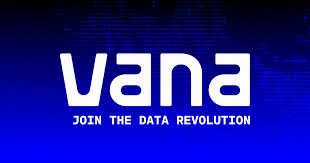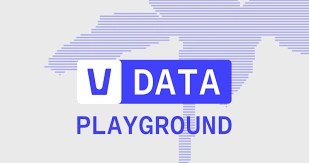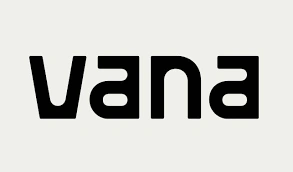Vana VANA: Redefining Data Ownership for AI Economy
Table of Contents

In a world where big tech holds the keys to our data, Vana (VANA) is building a different path, one where you own your data, not corporations. With AI’s appetite growing by the day, data is no longer a side-asset—it’s the backbone of innovation. Vana combines blockchain, privacy-preserving compute, and data collectives to let individuals export encrypted personal data, join DataDAOs, and earn rewards.
Vana has secured major funding (including from Paradigm and Coinbase Ventures) to accelerate its mission to overcome the “data wall” and unlock user-owned AI. It’s staking, tokenomics, mixed with community incentives — a full ecosystem shift. In this article, I’ll unpack what VANA is, how the token works, what DataDAOs & Data Liquidity Pools are, how privacy is preserved, the rewards & staking mechanisms, plus what risks you should watch. If you believe in a future where data is your asset, this piece is for you.
For more insights and updates on the latest trends in cryptocurrency, be sure to check out our Nifty Finances platform, which serves as your gateway to smarter financial decisions in the digital economy.

What Is Vana & Its Mission
Vana is an open protocol centered on data sovereignty: a framework where individuals own, control, and benefit from their own personal data rather than having it extracted and monetized by large centralized platforms. Its mission is to shift the power balance — empowering users to export their data, pool it through collective structures called DataDAOs (or Data Collectives), and negotiate directly with AI developers over usage, value, and compensation. In doing so, Vana aims to build a data economy that is equitable, transparent, and owned by those who generate the data.
The Concept of Data Sovereignty
Data sovereignty, as envisioned by Vana, means that users maintain full agency over their private information. That includes:
- Exporting data from platforms (social media, browsing, genetic, etc.), not locking it into walled gardens.
- Storing data in encrypted environments (user-controlled personal servers or secure off-chain storage) rather than centralized databases.
- Exercising granular control via permissions: deciding who can access what data, under which conditions, and for what compensation.
This belief stems from the view that personal data isn’t just a byproduct of digital activity, but a valuable asset. Users should be compensated and have decision-making power, not merely have their data used under opaque terms.
DataDAOs / Data Collectives
To operationalize this vision, Vana uses DataDAOs (sometimes called Data Collectives or Data Liquidity Pools). These are pools where users with similar data types or interests can contribute their encrypted data and collectively manage how that data is used and monetized. Key elements:
- Datasets are formed by users who contribute their data, which remains encrypted or stored non-custodially.
- Contributors receive DataDAO-specific tokens that represent ownership, governance rights, and a share in economic rewards when data is used.
- Developers or AI researchers can request access to these pooled datasets under governance rules set by DataDAOs. Payments or usage fees flow back to the contributors.
This collective structure allows individual users to benefit from the scale that large datasets provide — without losing control or privacy. It helps enable negotiation, accountability, and reward sharing.
How Vana Differs from Centralized Models / Walled Gardens
Vana’s architecture and governance differentiate it in significant ways from existing centralized data platforms (e.g., social media companies, large tech firms):
| Feature | Centralized / Traditional Platforms | Vana’s Approach |
|---|---|---|
| Control & Ownership | Platforms own or control most data; limited user consent/control | Terms and usage are often opaque; data usage hidden |
| Data Monetization | Platforms monetize user data, often without transparent compensation | Users share in monetization through DataDAO governance, proof-of-contribution, and token rewards. |
| Transparency | Data is often stored centrally; risk of leaks, misuse | Data access terms, usage conditions, prices negotiated on-chain; usage tracked; contributors govern usage. |
| Privacy | Terms and usage are often opaque; data usage is hidden | Data remains encrypted; operations happen off-chain or client-side; permissions smart contracts define access. |
Because Vana combines non-custodial storage, encryption, DataDAO governance, and on-chain permissions, it attempts to fix many of the moral, technical, and economic problems in centralized models. Users are not just raw inputs but active participants and owners.
Vana is working to change the digital data landscape by giving people ownership, agency, and value in their own data. Through DataDAOs and decentralized governance, the platform enables individuals to aggregate value, set terms, and benefit both financially and morally from their contributions. Unlike traditional systems where users are passive data sources feeding centralized profits, Vana aims for a future where data is a shared, governed, and fairly rewarded asset class—one built on transparency, sovereignty, and the ethical use of personal information.

VANA Tokenomics & Utility
The VANA token is central to the Vana Network: it’s designed not just as a governance and utility token, but as the engine that powers data sovereignty, incentivizes contributions, and enables a marketplace for user-owned data. Below, we cover its supply & allocation, how it’s used, and how emissions and rewards are phased to align with growth, decentralization, and sustainability.
Token Metrics & Distribution
- Total supply (max cap): 120 million VANA tokens.
- Main allocation categories: The supply is divided into four key groups:
- Community: ~ 44.0% of supply.
- Ecosystem: ~ 22.9%.
- Investors (early/backers): ~ 14.2%.
- Core Contributors (team/advisors): ~ 18.8%.
- Unlock / vesting schedules:
- Core Contributors: 1-year cliff, then linear unlock over about 48 months, fully unlocked around 60 months after TGE.
- Investors: 12-month lockup, then 36-month unlock; full unlock at ~48 months.
- Community: released partially at TGE (~20.3%), the rest unlocked over 36 months.
- Ecosystem: small portion at TGE (~4.8%), remainder unlocked over 48 months.
- Circulating Supply upon launch/listing: When it first listed (e.g., on Binance), the circulating supply was ~ 30.08 million VANA (~ 25.07% of total).
Utility of VANA Token
VANA is designed to have multiple utility roles in the network. Its functions include:
- Transaction Fees: VANA is required for executing transactions on the Vana Layer-1, including DataDAO interactions, smart contract use, etc.
- Staking (Validators & Data Validators): Users stake VANA to secure the network’s L1 validators; also to support DataDAOs (Data Validators) that validate data contributions and ensure data quality.
- Governance: VANA holders vote on protocol upgrades, emission schedules, reward parameters, etc. Over time, governance is intended to become more community-driven via the Vana DAO.
- Default Currency for Data Access: When datasets managed by DataDAOs are accessed or transacted, VANA is the default – though protection is made to allow swapping or pricing in alternate tokens if desired by data providers or consumers.
- Trading Pair for DataDAO Tokens: DataDAOs may issue their own tokens, but VANA acts as the common trading pair/base token for interoperability and liquidity across those data tokens.
Phases of Emission & Long-Term Incentives
Vana has structured its token emission in phased stages to match the network’s growth and priorities:
- Phase 1 (0-6 months): Build Data Liquidity – Emissions heavily reward DataDAO creators and early data contributors to bootstrap usage and data supply.
- Phase 2 (6-12 months): AI Innovation & Applications – Emissions begin to support creators building AI agents, apps using data; also start incorporating transaction fees/revenue into rewards to reduce reliance on fresh token emissions.
- Phase 3 (12-18 months): Decentralization & Governance – Greater community control over reward parameters; emissions begin tapering; rewards shift more toward transaction fees and usage-based flows.
- Phase 4 (18-24 months): Network Expansion & Sustainability – Focus on scaling, cross-chain / cross-DataDAO integrations; emissions become demand-driven; possibly moving toward a more steady-state model with lower inflation.
Together, these tokenomics and utility mechanics show how VANA is designed to balance:
- Incentivizing early growth (with larger emissions in early phases, community allocations)
- Maintaining alignment (long vesting for contributors and investors)
- Ensuring sustainability (phased emissions, increasing reliance on transaction fees, decreasing inflation over time)
- Broad utility (staking, governance, data access, trading pairs)
These measures help ensure that VANA is not just a speculative asset but a functional token with meaningful use and value tied to the network’s success.

Building & Participating in DataDAOs
DataDAOs (Data Decentralized Autonomous Organizations) are at the heart of the Vana ecosystem. They give individuals and communities a way to pool their data, establish ownership rights, and unlock new economic value while maintaining sovereignty. By participating in a DataDAO, users transform raw personal data into a collective asset that can fuel AI models, research, and innovative applications.
Starting or Joining a DataDAO
Anyone in the Vana ecosystem can create or join a DataDAO through a process that resembles setting up a liquidity pool in DeFi. The idea is simple: instead of liquidity in tokens, participants contribute streams of data.
- Starting a DataDAO – A creator defines the type of data the collective will focus on (e.g., social media activity, genomic data, browsing habits). They set governance rules, data quality standards, and reward distribution mechanisms. The DataDAO issues its own token, often paired with VANA, to track value and participation.
- Joining a DataDAO – Users who hold relevant data can contribute it to the Data Liquidity Pool (DLP). They must complete identity verification steps, give explicit consent, and set sharing preferences. Their contributions are then validated by Data Validators to ensure quality and compliance.
By joining, members earn rewards in VANA and potentially in the DataDAO’s native token, creating an incentive to keep contributing useful, high-quality data.
Proof of Contribution & Rewards
The backbone of a DataDAO is its Proof of Contribution model. Unlike mining or staking, rewards are tied to the value and quality of data. Validators use algorithms and consensus to evaluate contributions. Key factors include:
- Relevance: Does the data match the DAO’s focus (e.g., Reddit posts for a Reddit DataDAO)?
- Authenticity: Is the data verified as real, unaltered, and linked to a legitimate contributor?
- Consistency: Has the user provided ongoing, reliable data over time?
- Quality Signals: In some cases, data may be enriched or scored to reflect how usable it is for AI training.
Once validated, contributors receive rewards in VANA tokens drawn from the DAO’s emissions pool. The model ensures that higher-quality contributions are better rewarded, aligning incentives with the DAO’s success.
Examples of Live DataDAOs
Several live DataDAOs already showcase how this model works in practice:
- Reddit DataDAO – Aggregates social interaction data from Reddit, turning millions of posts and comments into structured datasets. This collective data can then be monetized by researchers, AI developers, or platforms looking to model online behavior.
- DNA DataDAO – Focuses on genomic and biological data contributed by individuals. Its mission is to democratize biomedical research while giving participants control over how their sensitive information is shared and monetized.
- Other emerging DataDAOs – Communities are experimenting with pools for browsing activity, app usage, and niche interest groups, broadening the scope of what can be turned into valuable data collectives.
These examples highlight the scalability of the concept: from social media activity to deeply personal health data, the DataDAO framework provides a trust layer for collective ownership.
By enabling individuals to pool data into collectively governed DAOs, Vana transforms data from an exploited resource into a user-owned asset class. Starting or joining a DataDAO allows users to directly monetize their contributions, participate in governance, and help shape the future of data-driven innovation. From Reddit to DNA, DataDAOs are proving that communities can reclaim value from their information — securely, transparently, and fairly.
Staking, Rewards & Community Incentives
The Vana ecosystem is designed to empower its community, ensuring that value creation flows directly to contributors, validators, and builders. With nearly half of the total token supply reserved for incentives, Vana makes clear that its growth will be driven by those who actively participate in securing the network and building DataDAOs.
Community Rewards Program
One of the most notable features of Vana’s tokenomics is that ~44% of the total supply of VANA tokens has been set aside for community distribution. This allocation supports:
- Early Contributors – individuals who provide value during the formative stages of the network, including testnet participants and feedback providers.
- Builders & Developers – teams creating DataDAOs, developing applications, or expanding infrastructure.
- Community Engagement – incentives for education, adoption, and community-driven governance.
This approach ensures that the community, not just the foundation or investors, becomes the primary beneficiary of Vana’s growth. Over time, the rewards program will decentralize token ownership, aligning incentives between users and the protocol.
Staking Mechanics
Staking sits at the core of Vana’s security and incentive design. Validators and Data Validators must stake VANA to participate in consensus and data validation.
- Validators – run network nodes, process transactions, and secure the blockchain. Their staking deposits act as economic guarantees, and poor performance can lead to slashing.
- Data Validators – focus specifically on verifying the quality, relevance, and authenticity of data flowing into DataDAOs. Their role is essential in ensuring trust in pooled datasets.
The reward schedule distributes VANA to stakers based on:
- Performance – higher uptime and accuracy yield greater rewards.
- Contribution to DataDAOs – top-performing DataDAOs with high-quality contributions attract additional incentives.
- Network Growth Phases – emissions are tuned to encourage early adoption and scale, gradually tapering as the ecosystem matures.
By combining staking with community-focused emissions, Vana ensures both security and active engagement.
Early Adopter Incentives
To accelerate growth, Vana provides special incentives for early adopters. These programs target participants who lay the foundation for long-term success:
- Testnet Contributors – users who test the infrastructure, provide feedback, and identify bugs are rewarded for their efforts in stress-testing the system.
- Builder Cohorts – developers and teams that launch early DataDAOs or build tooling around the protocol receive enhanced allocations and grants.
- Community Advocates – those who spread awareness, contribute educational content, or onboard new members can receive rewards through structured incentive campaigns.
These mechanisms reward risk-takers and early movers who believe in the vision of decentralized data sovereignty.
Through its staking model and generous community incentives, Vana prioritizes decentralization, security, and fairness. By dedicating ~44% of its supply to contributors and offering structured staking rewards for validators and Data Validators, the protocol ensures that its ecosystem thrives on active participation. Early adopters, builders, and validators not only help secure the network but also position themselves at the center of the data economy Vana is creating.
Vana is positioning itself as a leader in the emerging decentralized data economy, building the infrastructure for individuals and communities to reclaim ownership of their data. With strong financial backing, an expanding ecosystem, and a wide range of potential use cases, Vana’s market potential extends across industries like artificial intelligence, data commerce, research, and personalized services.
Vana VANA is offering more than just another crypto token—it represents a paradigm shift in how personal data is treated in the AI age. From enabling users to own, export, and monetize their data, to building DataDAOs, staking, participating in governance, and fueling AI innovation, VANA’s architecture is ambitious and built for the long haul.
If you believe in data as an asset class, VANA gives a roadmap: reward early, contribute quality data, engage in governance, and stay aware of privacy and regulation dynamics. The opportunity is there for those willing to build and participate.